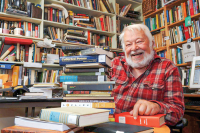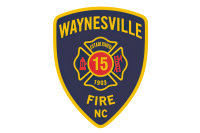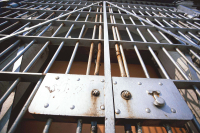The 1776 campaign against the Cherokee
By Lamar Marshall • Contributing Writer
It was a crisp, cold day with snow on the ground when I pulled my old 4-Runner to the shoulder of U.S. 441 near the north side of the gap at the top of Cowee Mountain between Dillsboro and Franklin. I was on the headwaters of Savannah Creek, on national forest land, looking at an 1850 map of the Western Turnpike, which identified the gap as Wilson Gap. Since then it has been known as both Watauga Gap and Cowee Gap. This was also the old Rutherford Trace, so named after North Carolina’s Gen. Griffin Rutherford, who attacked and burned the Middle and Valley Towns of the Cherokees in 1776.
Rutherford was to meet the South Carolina army under Col. Andrew Williamson at Nikwasi Town located at modern Franklin. From there the two combined armies would cross the Nantahala Mountains and burn the Valley Towns on Hiwassee and Valley rivers. As Rutherford marched across the Blue Ridge near modern Asheville and Waynesville, Williamson was burning the Lower Towns in South Carolina.
This nvnah, or trail, was an ancient and major thoroughfare of the Cherokee people. It, like most trails, connected important places by following a corridor of least geographical resistance, which meant utilizing the lowest and best mountain passes and the shallowest fording places along rivers. After the 1776 Rutherford invasion of Cherokee country, it was called Rutherford’s Trace and later became known as the Cherokee Road, then the State Road in the 1830s, the Western Turnpike by the1850s, and today is part of the corridor of U.S. 441.
See also: Ancient road signs
This point atop the Cowee Mountains was known to the first white traders as Seven Mile Mountain, being seven miles from Watauga Town on the Little Tennessee River. This was part of a major east-west Cherokee trail that connected the Catawba Indian country of central North Carolina to Tennessee and Georgia, passing through modern Buncombe, Haywood, Jackson, Macon and Cherokee counties. The gap here can be identified easily by travelers today by the bright yellow Gold City mine located on its south side.
Related Items
Both the ancient gap and its historical Cherokee trail had been blasted away by modern highway construction to make way for our modern “gasoline-powered wagons.” In so doing, they also blasted away the spot where Billy Alexander was shot through the foot by one of about 20 Cherokee warriors who boldly ambushed a thousand American troops in 1776. By the time the troops rallied and returned fire, the Cherokees, like ghosts, had vanished into the woods. Billie was carried on a litter for the rest of the expedition.
A path of destruction
I was tracking ghosts myself this day, on the trail of about 2,800 American troops who in 1776 found themselves not only at war with Great Britain but with the Cherokee nation. Finding themselves caught up in the War of Independence, the Cherokees sided with England, which promised to curb Western colonial expansion into their lands. The brutal Cherokee attacks on the American frontier were preceded by equally brutal atrocities committed by frontier riff-raff, no more than professional scalp hunters who made a living by either murdering Indians and collecting the government bounty on their scalps or selling them alive as slaves for British sugar plantations on islands around the Caribbean. The Cherokees attacked the colonial frontiers in July 1776, and by late summer and fall found three American armies totaling more than 6,000 men attacking from the north, the south and General Rutherford marching towards the heartland of their nation on this trail. The Cherokee fighters numbered around 2,000.
The trail ascended the Blue Ridge at Old Fort, where Rutherford’s army began its invasion on Sunday, Sept. 1, 1776. The men were inspired by Army Chaplain Reverend James Hall, who had preached a sermon the day before from 2 Samuel 1:10. “So I stood upon him, and slew him, because I was sure that he could not live after that he was fallen: and I took the crown that was upon his head, and the bracelet that was on his arm, and have brought them hither unto my lord.”
Six days later the chaplain shot and killed an innocent black slave belonging to a British trader named Scott at modern Sylva. He is said to have claimed that he thought the slave was an Indian. It seems the American “Canaan” was about to be cleaned out by the Euro-American belief that the anointed white race was like the Israelites of the Old Testament and Rutherford’s troops were the “soldiers of the Lord.” The Cherokees had a different theological point of view. They argued that the Great Spirit gave them their land and the white man had no right to take it.
So it was on this wintry day I was following along, as near as possible, this Cherokee trail that became a path of destruction. At Webster, the little village of Tuckasegee was burned and 16 acres of corn destroyed by army horses within a few hours. In an attempt to engage the retreating Cherokees, Rutherford sent a thousand troops up Savannah Creek to where I now stood, the remaining 1,800 troops and packhorses to follow. From the top of the gap looking south, the old Indian trail peeled off to the left down the drainage following Watauga Creek.
When U.S. 441 was built, it spared the old trail and the beautiful rural valley along Watauga Road. The trail followed Watauga Creek on to the Little Tennessee River where it crossed into the Cherokee town of Watauga near the junction of Riverbend Road and N.C. 28. The Middle Town Cherokee families were evacuated over the mountains, frustrating the American armies who could but wreak their vengeance on Cherokee houses, crops, cattle, food stores, and the few unlucky elderly and handicapped Cherokees that could not travel. In spite of being ordered by the North Carolina Council of Safety to protect Indian women and children, Rutherford could not restrain his men.
When they did choose to fight, Cherokees did so on their own terms. They were masters of guerrilla warfare who utilized mountain gaps and river narrows as places to set up “ambuscades.” These places funneled men and horses into small passes surrounded by high ground, from which the warriors could shoot down on their enemies. Most of Rutherford’s men were trained riflemen, crack shots armed with rifles, tomahawks, butcher knives and corn knives. They were hard men, born on the American frontier, raised on the land farming, hunting, raising animals and lately, fighting the British. But unlike the British, most were adapted to the more effective Indian manner of warfare, preferring to shoot from behind trees and rocks.
Perhaps the ambush at Cowee Mountain was intended to buy time for the evacuation of Watauga, Cowee, Nikwasi and other Middle Cherokee towns. The next ambush laid for Rutherford was to be on Wayah Creek, along modern Wayah Road, east of the Lyndon B. Johnson Job Corps Center in Franklin. This was to be the largest battle that Rutherford and Williamson’s armies would engage. Unfortunately for Rutherford, he failed to take Indian scouts with him and got lost at Franklin. He crossed the mountains at the wrong place, basically following the route of modern U.S. 64, and burned the Cherokee towns along Shooting Creek, Hayesville and Peachtree.
The army apparently surprised and surrounded the first town they came to. Quanassee was located just south of modern Hayesville. Six Cherokees were killed, two wounded, and an old man and boy captured. John Robinson killed the old Cherokee the next day and was tied and put under guard. It is doubtful that he was prosecuted.
The South Carolina army arrived at Canucca Town very near Nikwasi at modern-day Franklin, and followed what is now the Wayah Road, where about 500 to 600 Cherokees attacked Williamson’s troops. At least 13 American soldiers were killed before the Cherokees retreated. They were buried in a swampy place, with a causeway built over the graves to hide them. There is not so much as a historical marker to mark their graves or tell the story. The army then marched over the mountains to the site of modern-day Andrews, where they burned all the Valley Towns down to the Murphy area and soon met Gen. Rutherford.









